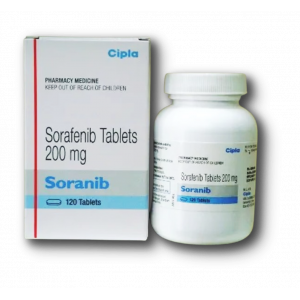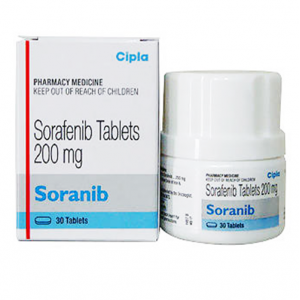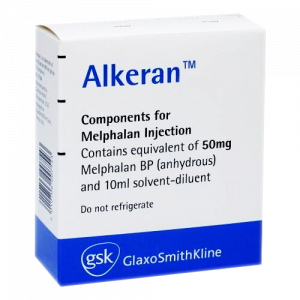- Anti-hestaminic & Respiratory Drugs (21)
- Anti-inflammatory Drugs (181) +-
- Baby & Mom (1314) +-
- Baby & Mom > Bath, skin & Hair > Skin Care > wibes (53)
- Beauty (2723) +-
- Beauty > Skin Care > whitening (273)
- Chemotherapy & Immune Response (659) +-
- Chemotherapy & Immune Response > ANTI-FUNGAL (6)
- Chemotherapy & Immune Response > Chemotherapeutic Agents > Hormone Antagonists >Enzyme Inhibitors (235)
- CIRCULATORY DISTURBANCE AGENTS (23)
- Diet & Fitness Products (248) +-
- DRUG AFFECTING CENTRAL NERVOUS SYSTEM (183)
- Drugs affecting CNS >Anti- epileptic (78)
- HEMATOLOGY (12)
-
Medical Supplies (468)
+-
- Chemicals & Disinfectants (19)
- Dental Supplies (27)
- Devices & Instruments (8)
- Diabetic Supplies (107)
- General Medical Supplies (21)
- I.V & Medical Solution (0)
- Intensive Care Unit & Anesthesia Supplies (0)
- Kindney Unit Supplies (12)
- Lab Supplies (1)
- Miscellaneous (21)
- Neonatal Unit Supplies (0)
- Operation Room Supplies (2)
- Sanitary (5)
- Sterilization Supplies (0)
- Surgical Sutures (4)
- Syringes (3)
-
Medicines & Health (2535)
+-
- Allergy & Sinus (93)
- Children's Health Care (52)
- Cough, Cold & Flu (297)
- Digestive Health & Nausea (218)
- Ear, Nose & Throat Care (174)
- Eye Care (117)
- Feminine Care (315)
- Foot Care (4)
- Orthopaedic Appliances (0)
- Pain Relief & Management (227)
- Pill Organizer (2)
- Skin Treatments (734)
- Sleep & Snoring Aids (0)
- Support & Braces (6)
- Medicines & health > Gout releif (42)
- Natural & Organic Products (82) +-
- OTC > Analgesics > Anti-inflammatory Drugs (43)
-
Personal Care (3044)
+-
- Bath & Body (256)
- Deodorant & Anti-perspirants (179)
- Ear, Nose & Throat Care (169)
- Eye Care (123)
- Feminine Care (362)
- Foot Care (12)
- Hair Care (388)
- Home Tests & Monitorings (14)
- Incontinence (7)
- Lip Care (20)
- Massage & Relaxation (18)
- Natural & Organic Personal Care (7)
- Oral Care (81)
- Pregnancy & Fertility (60)
- Shaving & Grooming (67)
- Sun Care (67)
- Prescribtion drugs > cardiovascular system > Hypertention drugs (334) +-
-
Prescription Drugs (2988)
+-
- Analgesics (180)
- Cardiovascular System (347)
- Drugs Affecting Musculoskeletal System (62)
- Drugs Used In Infections (53)
- Ear & Nose Drugs (2)
- Endocrine System (157)
- Gastrointestinal Tract (232)
- Gastrointestinal Tract (214)
- GYNECOLOGY (2)
- Miscellaneous (6)
- NEPHROLOGY > URINARY SYSTEM > RENAL DISORDERS > URINARY TRACT DISORDERS (24)
- NEUROLOGY (210)
- Nutrients & Blood Electrolytes (2)
- prescription drugs > cardiovascular system >Anti-hypertensive drugs (78)
- Prescription Drugs > Gastrointestinal Tract > Hepatology > Liver treatment (57)
- Respiratory System (137)
- SKIN > NAILS > HAIR > TOPICAL PREPARATIONS (42)
- Vaccines (1)
- Sexual Wellness (258) +-
- strong anti-emetic & adjuvent used with anti-neoplastic (0)
- Vitamins & Minerals Supplements (1134) +-
Ex Tax: 16,280EGP
Example
You can return the product within 14 days of purchase.
ReturnsYou can return the product within 14 days of purchase.

Dosing & Uses
Adult
Dosage Forms & Strengths
tablet
200mg
Renal Cell Carcinoma
Indicated for advanced renal cell carcinoma
400 mg PO q12hr
If skin toxicity, discontinue/decrease dose frequency to qDay or every other day as recommended by Manufacturer
Hepatocellular Carcinoma
Indicated for unresectable hepatocellular carcinoma
400 mg PO q12hr
If skin toxicity, discontinue/decrease dose frequency to qDay or every other day as recommended by Manufacturer
Thyroid Cancer
Indicated for locally recurrent or metastatic, progressive, differentiated thyroid cancer (DTC) that is refractory to radioactive iodine treatment
400 mg PO q12hr
Dosage modification for DTC
- Dose reduction for dermatologic toxicities (see prescribing information for specific toxicity grades 2 or 3 dosage modifications)
- First dose reduction: 600 mg/day (divided as 2 doses of 400 mg and 200 mg 12 hr apart)
- Second dose reduction: 200 mg q12hr
- Third dose reduction: 200 mg qDay
Dosage Modifications
Dermatologic toxicities (HCC or RCC)
- Grade 1
Any occurrence: Continue treatment and consider topical therapy for symptomatic relief
- Grade 2
- First occurrence: Continue treatment and consider topical therapy for symptomatic relief; if no improvement within 7 days, interrupt treatment and decrease dose (see below)
- No improvement within 7 days or second or third occurrence: Withhold drug until toxicity resolves to grade 0-1, then decrease dose by 1 level (ie, 400 mg daily or 400 mg every7 other day)
- Fourth occurrence: Discontinue
- Grade 3
- First or second occurrence: Withhold drug until toxicity resolves to grade 0-1, then decrease dose by 1 level (ie, 400 mg daily or 400 mg every7 other day)
- Third occurrence: Discontinue
Dermatologic toxicities (DTC)
- Dose reduction schedule
- First reduction to 600 mg/day: 400 mg and 200 mg administered 12 h apart
- Second reduction to 400 mg/day: 200 mg q12hr
- Third reduction to 200 mg/day: 200 mg once daily
- Grade 1
Any occurrence: Continue treatment
- Grade 2
- First occurrence: Decrease dose to 600 mg/day; if no improvement, see below
- No improvement within 7 days at reduced dose or second occurrence: Withhold drug until toxicity resolves to grade 1; if drug resumed, decrease dose per schedule
- Third occurrence: Withhold drug until toxicity resolves to grade 1; if drug resumed, decrease dose per schedule
- Fourth occurrence: Discontinue
- Grade 3
- First occurrence: Withhold drug until toxicity resolves to grade 1; if drug resumed, decrease dose by 1 dose level
- Second occurrence: Withhold drug until toxicity resolves to grade 1; if drug resumed, decrease dose by 2 dose levels
- Third occurrence: Discontinue
Renal Impairment
- Mild-to-moderate: Dose adjustment not necessary
- Severe: Not studied
Hepatic Impairment
- Mild-to-moderate: Dose adjustment not necessary
- Severe: Not studied
Melanoma (Orphan)
Treatment of stage IIB through stage IV melanoma
Orphan indication sponsor
EMD Serono, Inc; One Technology Plc; Rockland, MA 02370
Desmoid Tumors aggressive fibromatosis (Orphan)
Orphan designation for treatment of desmoid tumors or aggressive fibromatosis
Orphan sponsor
Bayer HealthCare Pharmaceuticals, Inc; 100 Bayer Boulevard, P.O. Box 915; Whippany, New Jersey 07981
Interactions
All InteractionsSort By:
Severity
Contraindicated (5)
dronedarone
lefamulin
pimozide
thioridazine
ziprasidone
Serious (71)
adagrasib
alfuzosin
amiodarone
amisulpride
anagrelide
apalutamide
aripiprazole
artemether
atomoxetine
buprenorphine
buprenorphine buccal
buprenorphine subdermal implant
buprenorphine transdermal
buprenorphine, long-acting injection
carbamazepine
ceritinib
clarithromycin
dabrafenib
desflurane
dofetilide
donepezil
efavirenz
eliglustat
encorafenib
entrectinib
enzalutamide
erdafitinib
eribulin
escitalopram
fexinidazole
fingolimod
fosphenytoin
gilteritinib
glasdegib
granisetron
hydroxychloroquine sulfate
hydroxyzine
idelalisib
inotuzumab
isoflurane
itraconazole
ivosidenib
lithium
lonafarnib
lopinavir
macimorelin
mirtazapine
oxaliplatin
palifermin
panobinostat
phenobarbital
phenytoin
pitolisant
posaconazole
primaquine
primidone
ribociclib
rifabutin
rifampin
rifapentine
ropeginterferon alfa 2b
selinexor
sevoflurane
siponimod
St John's Wort
tetrabenazine
toremifene
tucatinib
umeclidinium bromide/vilanterol inhaled
vilanterol/fluticasone furoate inhaled
voriconazole
Monitor Closely (175)
albuterol
alfuzosin
amitriptyline
amobarbital
amoxapine
apomorphine
arformoterol
arsenic trioxide
artemether/lumefantrine
artesunate
asenapine
asenapine transdermal
atazanavir
azithromycin
bedaquiline
bevacizumab
bosentan
budesonide
bupropion
butabarbital
butalbital
cenobamate
chlorpromazine
ciprofloxacin
citalopram
clarithromycin
clomipramine
clozapine
cortisone
crizotinib
cyclophosphamide
darunavir
dasatinib
deflazacort
degarelix
denosumab
desipramine
deutetrabenazine
dexamethasone
dichlorphenamide
disopyramide
dofetilide
dolasetron
doxepin
doxorubicin
doxorubicin liposomal
droperidol
efavirenz
elagolix
encorafenib
erythromycin base
erythromycin ethylsuccinate
erythromycin lactobionate
erythromycin stearate
escitalopram
eslicarbazepine acetate
ethotoin
etravirine
ezogabine
fedratinib
fingolimod
flecainide
fluconazole
fludrocortisone
fluoxetine
fluphenazine
formoterol
foscarnet
fosphenytoin
fostemsavir
gemifloxacin
gemtuzumab
gepirone
givinostat
goserelin
grapefruit
griseofulvin
haloperidol
histrelin
hydrocortisone
ibutilide
iloperidone
indapamide
irinotecan
irinotecan liposomal
isradipine
istradefylline
lapatinib
lenacapavir
lenvatinib
letermovir
leuprolide
levofloxacin
lopinavir
lumefantrine
maprotiline
mefloquine
methadone
methylprednisolone
mifepristone
mitotane
modafinil
moxifloxacin
nafcillin
nefazodone
nelfinavir
neomycin PO
nevirapine
nilotinib
nortriptyline
octreotide
ofatumumab SC
ofloxacin
olanzapine
ondansetron
osilodrostat
osimertinib
oxaliplatin
oxcarbazepine
ozanimod
paclitaxel
paclitaxel protein bound
paliperidone
pasireotide
pazopanib
pentamidine
pentobarbital
perphenazine
phenobarbital
phenytoin
posaconazole
prednisolone
prednisone
primidone
procainamide
propafenone
protriptyline
quetiapine
quinidine
quinine
quizartinib
ranolazine
rifapentine
risperidone
ritonavir
romidepsin
rucaparib
selpercatinib
sertraline
siponimod
sipuleucel-T
solifenacin
sotalol
stiripentol
sunitinib
tacrolimus
tazemetostat
tecovirimat
telavancin
thiothixene
tipranavir
trastuzumab
trastuzumab deruxtecan
triamcinolone acetonide injectable suspension
triclabendazole
trimipramine
triptorelin
valbenazine
vandetanib
vardenafil
vemurafenib
voclosporin
voriconazole
vorinostat
warfarin
Minor (10)
acetazolamide
anastrozole
chloroquine
cocaine topical
cyclophosphamide
danazol
drospirenone
ketoconazole
larotrectinib
levoketoconazole
Adverse Effects
>10%
Thrombocytopenia (12-46%)
Anemia (44%)
Diarrhea (43%)
Rash/desquamation (40%)
Fatigue (37%)
Abdominal pain (31%)
Hand-foot skin reaction (30%)
Weight loss (30%)
Anorexia (29%)
Alopecia (27%)
Nausea (24%)
Lymphopenia (23%)
Neutropenia (18%)
Hemorrhage (15-18%)
Hypertension (9-17%)
Vomiting (16%)
Constipation (15%)
Neuropathy (13%)
Dry skin (11%)
1-10%
Headache (10%)
Joint pain (10%)
Congestive heart failure, MI (1.9%)
QT prolonation (rare)
<1%
Acute renal failure
Angioedema and arrhythmia may occur
Bone pain reported
Frequency Not Defined
Stevens-Johnson Syndrome
Hyperthyroidism
Interstitial lung disease
Postmarketing Reports
Hypersensitivity: Angioedema, anaphylactic reaction
Hepatobiliary disorders: Drug-induced hepatitis, including reports of hepatic failure and death
Dermatologic: Stevens-Johnson syndrome and toxic epidermal necrolysis (TEN)
Musculoskeletal: Rhabdomyolysis, osteonecrosis of the jaw
Respiratory: Interstitial lung disease-like events
Blood and lymphatic disorders: Thrombotic microangiopathy (TMA)
Vascular: Arterial (including aortic) aneurysms, dissections, and rupture
Warnings
Contraindications
Hypersensitivity
Coadministration with carboplatin and paclitaxel in patients with squamous cell lung cancer
Cautions
Osteonecrosis of jaw reported
Increased risk of cardiac ischemia/HTN/hemorrhage; consider temporary or permanent discontinuation of therapy in patients who develop cardiovascular events
Withhold therapy for at least 10 days prior to elective surgery; do not administer for at least 2 weeks following major surgery and until adequate wound healing; safety of resumption of therapy after resolution of wound healing complications has not been established
Hepatitis reported; characterized by a hepatocellular pattern of liver damage with significant increases of transaminases which may result in hepatic failure and death
QT Prolongation: Monitor for prolonged QT intervals with CHF, bradyarrhythmias, drugs known to prolong QT interval, and electrolyte abnormalities; avoid with congenital long QT syndrome
Congestive heart failure reported; temporary or permanent discontinuation of therapy should be considered in patients who develop cardiovascular events
Monitor blood pressure weekly during first 6 weeks and periodically thereafter; consider temporary or permanent discontinuation for severe or persistent hypertension despite antihypertensive therapy
Avoid pregnancy
High incidence of skin toxicity and rash
Dermatologic toxicities reported; management of dermatologic toxicities may include topical therapies for symptomatic relief, temporary treatment interruption and/or dose reduction of the drug; in severe or persistent cases, permanent discontinuation should be considered; there have been reports of severe dermatologic toxicities, including Stevens-Johnson syndrome (SJS) and toxic epidermal necrolysis (TEN); these cases may be life-threatening; discontinue therapy if SJS or TEN are suspected
Impairs exogenous thyroid suppression; for patients with impaired TSH suppression while receiving sorafenib, the median maximal TSH was 1.6 mU/L and 25% had TSH levels >4.4 mU/L; monitor TSH levels monthly and adjust thyroid replacement medication as needed in patients with disseminated thyroid cancer
Temporarily discontinue before surgery, resumption should be based on adequate wound healing
Monitor liver function tests regularly; discontinue for unexplained transaminase elevations
An increased risk of bleeding may occur; if any bleeding necessitates medical intervention, consider permanent discontinuation of therapy; due to potential risk of bleeding, treat tracheal, bronchial, and esophageal infiltration with local therapy prior to administering therapy in patients with DTC
Gastrointestinal perforation reported in less than 1% of patients receiving therapy; in some cases this was not associated with apparent intra-abdominal tumor; in the event of gastrointestinal perforation, permanently discontinue
Drug interactions overview
- Infrequent bleeding or elevations in the International Normalized Ratio (INR) reported in some patients taking warfarin while on therapy; monitor patients taking concomitant warfarin regularly for changes in prothrombin time (PT), INR or clinical bleeding episodes
- Use of in combination with carboplatin/paclitaxel contraindicated in patients with squamous cell lung cancer; this drug in combination with gemcitabine/cisplatin not recommended in patients with squamous cell lung cancer; safety and effectiveness not established in patients with non-small cell lung cancer
- This drug can prolong QT/QTc interval; QT/QTc interval prolongation increases risk for ventricular arrhythmias; avoid therapy in patients with congenital long QT syndrome; monitor electrolytes and electrocardiograms in patients with congestive heart failure, bradyarrhythmias, drugs known to prolong QT interval, including Class Ia and III antiarrhythmics; correct electrolyte abnormalities (magnesium, potassium, calcium); Interrupt therapy if QTc interval is greater than 500 milliseconds or for an increase from baseline of 60 milliseconds or greater
Pregnancy & Lactation
Pregnancy
There are no available data in pregnant women to inform a drug associated risk
Animal data
Based on findings from animal studies and mechanism of action, therapy may cause fetal harm when administered to a pregnant woman; in animal reproduction studies, oral administration to pregnant rats and rabbits during period of organogenesis resulted in embryo-fetal toxicities at maternal exposures that were significantly lower than human exposures at recommended dose of 400 mg twice daily; apprise pregnant women and females of reproductive potential of potential risk to fetus
Pregnancy testing
Verify pregnancy status of females of reproductive potential prior to initiation of therapy
Contraception
- Females: Therapy may cause fetal harm when administered to a pregnant woman; advise females of reproductive potential to use effective contraception during treatment and for 6 months following last dose of drug
- Males: Based on genotoxicity and findings in animal reproduction studies, advise male patients with female partners of reproductive potential and pregnant partners to use effective contraception during treatment and for 3 months after the last dose
Infertility
Males: Based on findings in animal studies, therapy may impair fertility in males of reproductive potential
Lactation
There are no data on presence of drug or its metabolites in human milk, or its effects on breast-fed child or on milk production; drug was present in milk of lactating rats; because of potential for serious adverse reactions in breastfed child from drug, advise lactating women not to breastfeed during treatment and for 2 weeks after last dose
Pregnancy Categories
A: Generally acceptable. Controlled studies in pregnant women show no evidence of fetal risk.
B: May be acceptable. Either animal studies show no risk but human studies not available or animal studies showed minor risks and human studies done and showed no risk.
C: Use with caution if benefits outweigh risks. Animal studies show risk and human studies not available or neither animal nor human studies done.
D: Use in LIFE-THREATENING emergencies when no safer drug available. Positive evidence of human fetal risk.
X: Do not use in pregnancy. Risks involved outweigh potential benefits. Safer alternatives exist.
NA: Information not available.
Pharmacology
Mechanism of Action
Multikinase inhibitor (including VEGF and PDGF receptor kinases), reduces tumor cell proliferation in vitro, may act at least partially by inhibiting tumor angiogenesis
Absorption
Bioavailability: 38-49%, reduced by high fat diet
Peak Plasma Time: 3 hr
Distribution
Protein Bound: 99.5%
Metabolism
Metabolism: in liver by CYP3A4 & UGT1A9
Elimination
Half-Life, Elimination: 25-48 hr
Excretion: Feces 77%; urine 19%
Administration
Oral Administration
Take 1 hr before or 2 hr after meals
Although partially metabolized by CYP3A4, dose modification appears to be unnecessary if coadministered with CYP3A4 inhibitors
Monitor: BP
Write a review
Your Name:Your Review: Note: HTML is not translated!
Rating: Bad Good
Enter the code in the box below:








